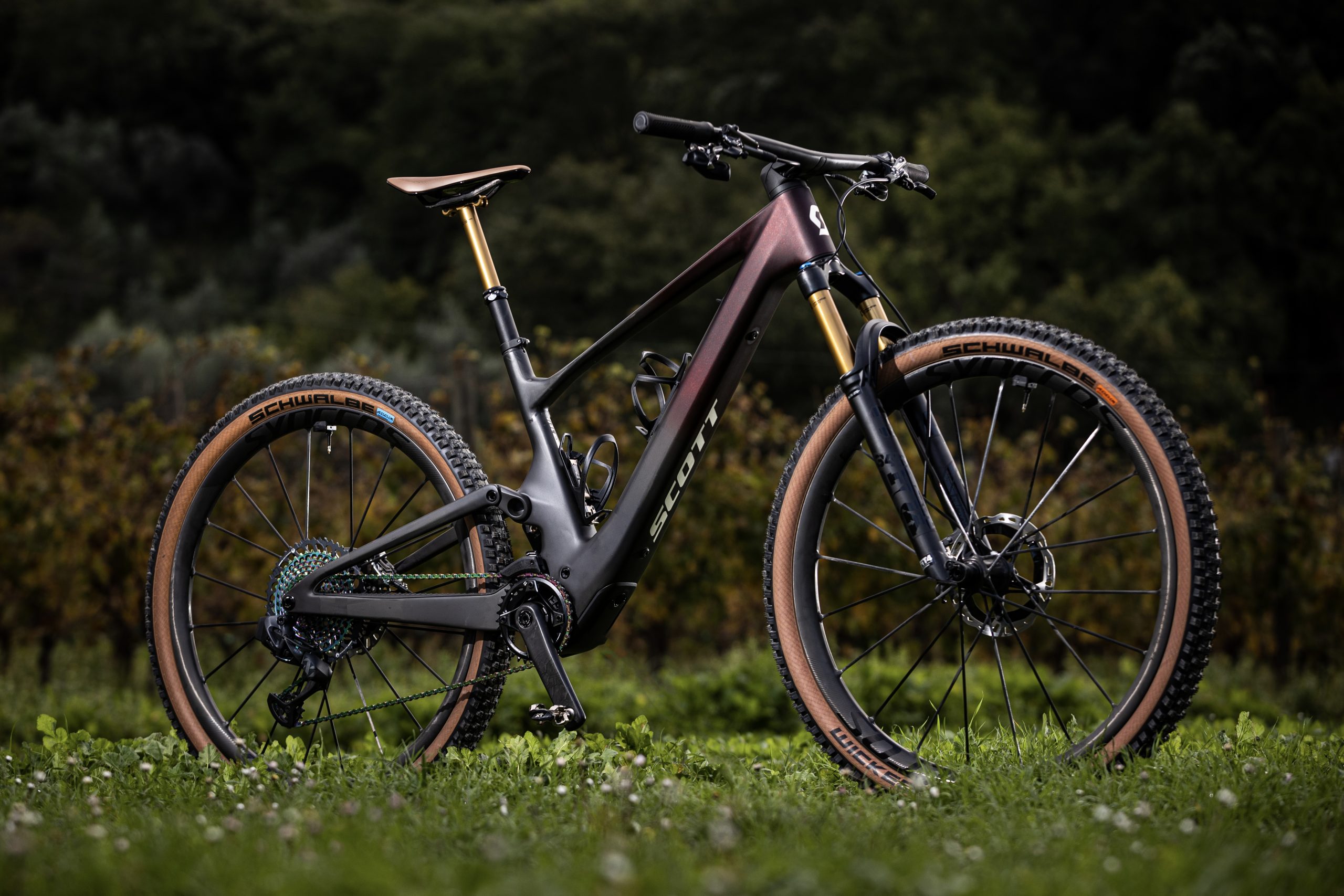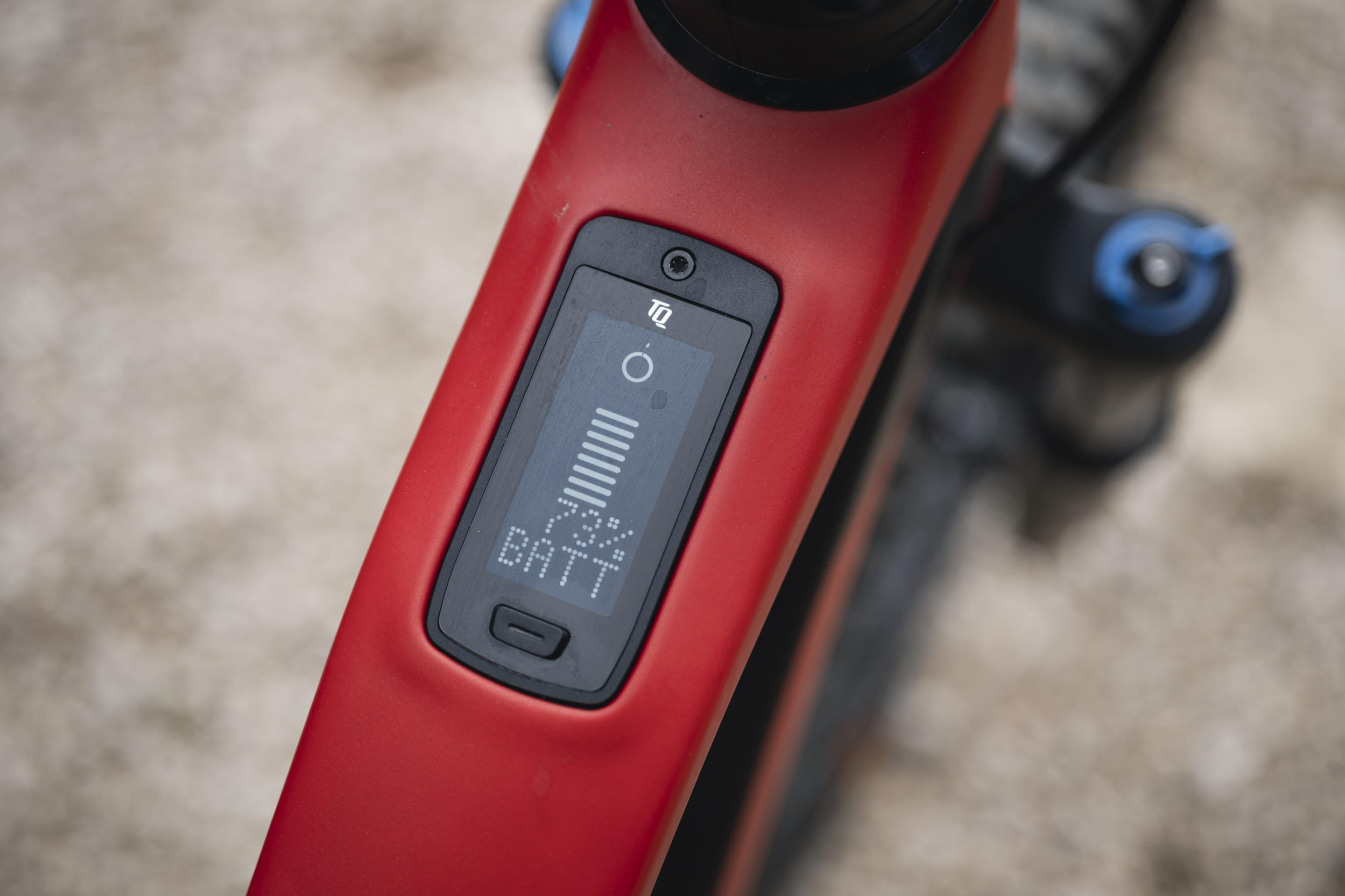Diet e-bikes are all the rage, and Rotwild's new R.X275 is the new slimming club champion, but is it feast or famine on the trails?
Rotwild R.X275 Pro e-bike first ride review
With a claimed weight of 15.3kg in top spec, the Rotwild R.X275 is the lightest production full-sus e-bike on the market. It also happens to be an absolute weapon on the right trails.
Need to know
- Ultra lightweight down-country e-bike with 120mm rear travel
- Skinny down tube houses a 250Wh battery
- TQ motor delivers 50Nm torque in near silence
- Peak power detuned to 200W, but Boost button lets you bump this up to 300W
- Carbon frame with flex-stay swingarm to save weight
- Weighs from just 15.3kg for the Ultra spec in size Medium

Rotwild have succeeded in making an e-bike down tube that’s slimmer than most analogue bikes. Those Fidlock magnetic bottle bosses can take a water bottle or the 160Wh range extender.
At one end of the spectrum, the e-bike arms race is all about packing in the biggest batteries, and offering the greatest range, using maximum assistance. Meanwhile, at the opposite end, brands are tripping over each other to build the lightest emtb on the market.

Scott’s Lumen eRide costs €15,999 and weighs a claimed 15.6kg
Last year alone, Pivot launched the Shuttle SL, with a special lightweight version coming in at 16.44kg. Hot on its heels were the weight weenies at Scott, cleaving chunks off that figure with the 15.6kg Lumen eRide. Even if the smallprint revealed that Scott used a size small and a billionaire’s spec to to hit that weight.

Pivot’s Shuttle SL impressed us when we tested it.
Then BMC threw its hat into the ring with the TQ-powered Fourstroke AMP LT LTD. It used a more sensible real world spec compared to the Lumen, and only ended up a few hundred grams heavier, with a claimed weight of 15.9kg.

The Rotwild R.X275 Ultra weighs a claimed 15.3kg in size medium and costs €12,499.
Now there’s an even lighter option on the market, and it doesn’t use a pocket-sized frame to sneak ahead of its rivals at the weigh in.
Rotwild’s catchily-named R.X275 is a claimed 15.3kg in size medium, and yet the top model costs €3,500 less than the most lithesome Lumen SL.

We like the fact that Rotwild lets you choose between routing the cables through the side of the down tube or through the headset.
Frame
Rotwild has achieved this impressive weight with a two-prong approach. the svelte carbon chassis forms the foundation of the R.X275 and, at 1,850g, saves 100g over the Scott. A strategy of simplicity and minimalism manifests in details like the flexstay rear end – that cuts down on pivots and bearings – the flat mount disc mount, and the internal cable routing that runs along grooves in the battery housing, which negates the needs for internal fixtures.

With its concentric, harmonic drive, and near silent running, the TQ motor is probably the stealthiest motor on the market.
Motor and battery
Talking of the battery, a useful 600g weight saving comes from substituting TQ’s commonly-used 360Wh unit for a smaller 250Wh power pack. Rotwild also eschews the complex remote lockouts found on the Scott, so the R.X275 ends up well ahead of its rival on the scales.
And if you’re worried about range, there’s a 160Wh extender battery that fits in one of the two bottle mounts on the down tube via a custom Fidlock interface.

Rotate the Boost ring to turn the power up to 11.
Reducing the peak power is another way Rotwild mitigates against that reduced battery capacity. TQ’s normal 300W max power has been chipped back to 200W, but a nifty red Boost Button on the handlebars lets you amplify this to the full 300W for up to 30 seconds. In reality it’s more of a ring controller, in the same vein as the Fazua remote, rather than a button, but it’s compact, light and intuitive to use.

TQ’s top tube mounted display is uncluttered and easy to read.
Opting for that smaller battery really pays dividends when it comes to the Rotwild’s aesthetics. That down tube is skinnier than most analogue bikes, and it’s almost impossible to clock the hybrid nature of the R.X275’s power plant without a close inspection.
Being pitched as a cross-country/down-country bike, all four frame sizes run on 29in wheels, and travel is 120mm at the rear coupled with a 130mm fork up front. Rotwild has optimised the spec to eke out that meagre battery capacity without resorting to lots of fragile, spindly components.
The motor made it easy to suspend disbelief and convince myself that I was, in fact, a considerably fitter version of myself riding an analogue bike.
Components
Schwalbe’s Nobby Nic and Wicked Will tyre combo work particularly effectively in this energy efficiency role. With so little rolling resistance, they are impressive at both carrying speed and covering ground. And while I initially hated the lack of edge knob when cornering, the more I’ve ridden them, the more I’ve begun to embrace their drifty nature.
On the Pro spec model that I rode is a Fox 34 Performance Elite fork with FIT4 damper and a Fox Float DPS Performance inline shock. The wheels are alloy DT Swiss HX1700 Spline and the drivetrain is a mix of Shimano XT with an E*thirteen crank. Shimano also supplies the XT four-piston brakes and there’s a lightweight two-position Fox Transfer SL dropper post. My demo bike, in size large, weighed 16.5kg without pedals.

Take a tight hold of the reins and you can really hustle the Rotwild.
How it rides
Riding the Rotwild is like being chased down the road by a rabid dog, and discovering an untapped reserve of speed that you never thought you had. From the moment I left the car park, at the foot of Massa Marrittima’s Tuscan trail network, I was on the rivet, full gas up the 400m climb like Tom Pidcock, late for school, doing his paper round, chased by an imaginary Jack Russell.

It’s hard to resist cranking out of the saddle everywhere on the Rotwild.
Climbing
However mortal the reality of my pace compared to Super-Pid, I still ended up spending the next hour with my heart rate bouncing off the limiter, egged on by the assistance of the Rotwild/TQ package.
With that low weight, firm suspension (even in the open mode), efficient motor and fast tyres, I couldn’t resist the temptation to get out of the saddle and sprint at any little rise – something I almost never do on an e-bike. And the blissful silence and natural response of the motor – particularly as it seamlessly interacted with the speed limiter – made it easy to suspend disbelief and convince myself that I was, in fact, a considerably fitter version of myself riding an analogue bike.

The motor blends in and out seamlessly when you start hitting the limiter.
On steeper ramps, where the switchbacks tightened, or a knot of roots pierced the soil, thumbing the Boost Button delivered all the extra shove I needed from the motor.
Even so, it soon became obvious that finding gradual travelator climbs, rather than precipitous elevator shafts, is the key to getting the most from the smaller battery and the modest torque of the TQ motor.

That lack of mass and those short chainstays mean you can really throw the R.X275 around on the descents.
Descending
Initially I was concerned that the size large frame, with its 485mm reach and 649mm top tube, would feel too racy on the fun bits, but I needn’t have worried. The seated riding position is never uncomfortable, despite being roomy and stretched out. It was easy to tap out a tempo along the flat, but the 130mm head tube length and stubby 50mm stem meant the cockpit fell perfectly to hand without contorting into some arse-above-your-head, tyre sniffing, yoga pose on the descents.
In fact the R.X275 was remarkably adept at descending. With a trail-friendly 66º head angle and short 437mm chainstays, there was plenty of stability at speed, but it was also easy to load the front and whip the Rotwild between alternate corners.
As much as it encouraged me into the pain cave on the climbs, it delivered lungfuls of laughing gas on the way back down. That firm suspension may not be the most comfortable – particularly up front, where the FIT4 damper and need to over-pressurise the air chamber (I ran 130psi) turned my hands into claws – it’s superbly supportive for pumping ground and loading up in turns. There’s also bags of pop, too, so I could hop between lines and gap across the roughest sections with ease.

Rotwild R.X275 Pro Strava ride
Range
With the motor in support level 2 (out of three) and some use of the Boost Button on the climb, I clocked 14.37km and 451m of climbing using 44% battery. Extrapolate that out and a 78kg rider in dry conditions should be able to get 1,000m of climbing from the internal battery, or 1,500m with the range extender. Reduce the power mode, and avoid boost temptation, and you’ll get even more. But the beauty of the Rotwild is that it’s so light that running out of battery is not the end of the world.
- Best electric mountain bikes: join the riding revolution
- Best mountain bike saddles: are you sitting comfortably?
- Best action cameras for mountain biking
Verdict
Rotwild has nailed the balance between weight, power, speed and handling with its R.X275. Rapid but extremely rewarding, it provides a healthy return on your energy investment, amplifying the uphill pace of a down-country bike without sacrificing any frenzied fun on the descents. While it might not be the best e-bike for churning through the winter mire, or lapping your local enduro tracks, it simply rips on flowing singletrack, and makes every ride feel like a World Cup podium battle.
















